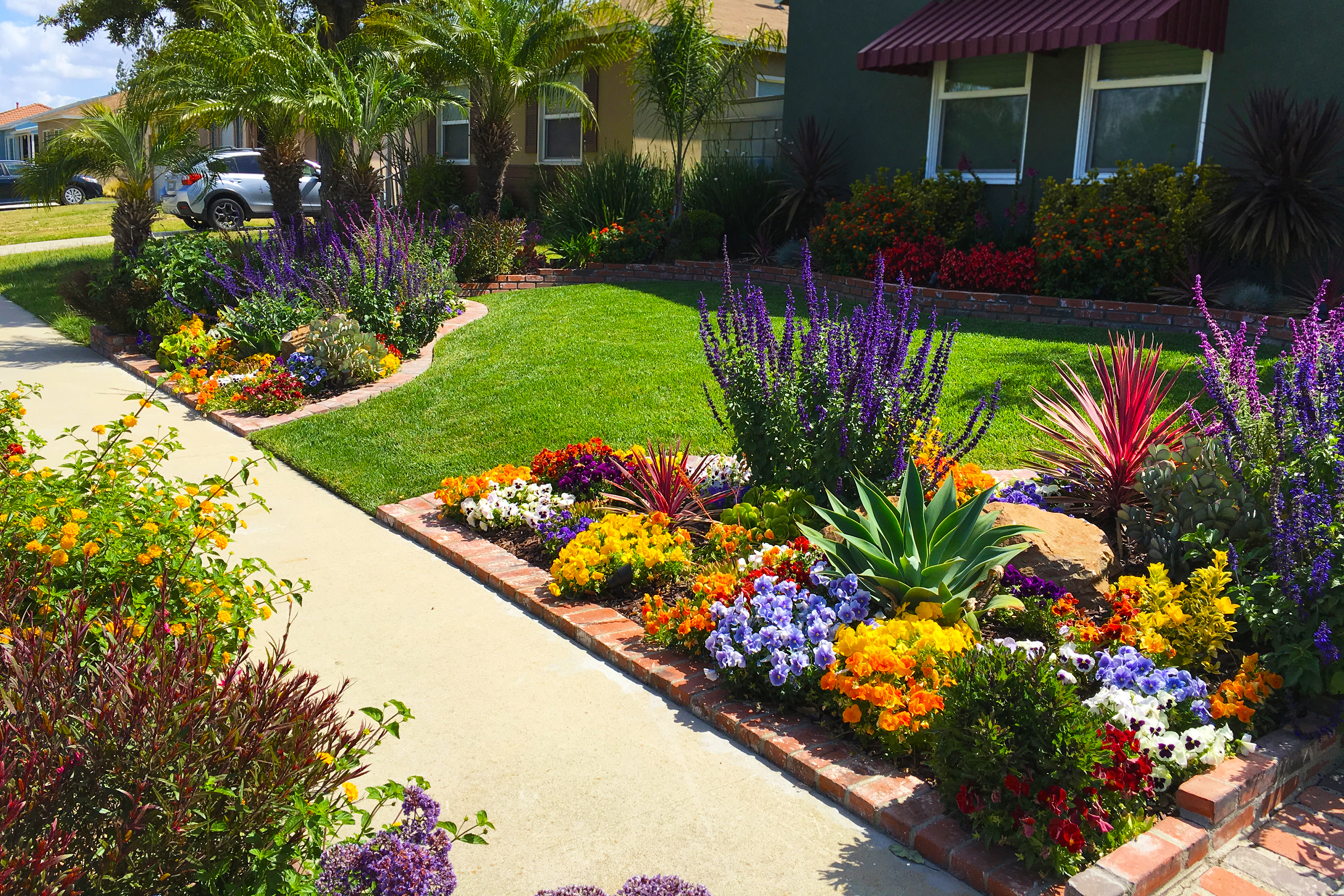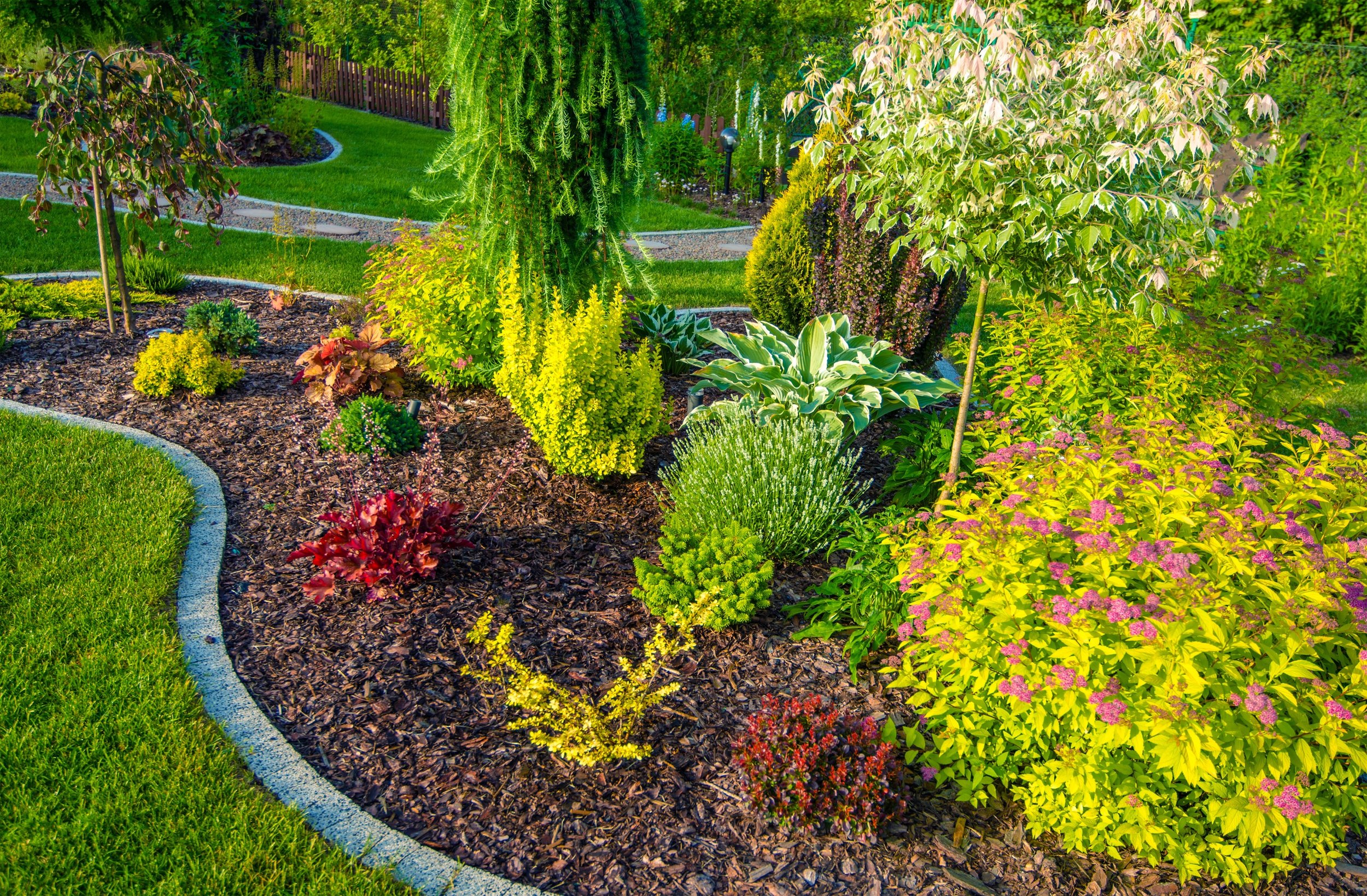Efficient Lawn Cleanup Jacksonville: Preserve a Tidy and Healthy Lawn
Efficient Lawn Cleanup Jacksonville: Preserve a Tidy and Healthy Lawn
Blog Article
Elevate Your Residential or commercial property's Visual With Lasting Landscaping Designs and Eco-Friendly Practices

Advantages of Lasting Landscaping
Carrying out sustainable landscape design methods not only saves all-natural sources but also promotes biodiversity and boosts overall ecological wellness. By picking environment-friendly landscaping techniques, homeowner can reap a wide range of benefits that prolong past just aesthetic charm. One substantial advantage is the decrease of water intake through using drought-resistant plants, rain gardens, and efficient watering systems. This not only lowers utility costs however likewise contributes to water conservation efforts in the area.
In addition, sustainable landscape design can boost soil health and wellness by minimizing using chemical plant foods and pesticides, thus producing a much healthier environment for plant growth and useful soil organisms. This, in turn, boosts the general resilience of the landscape to hold up against environmental stressors and environment modification impacts - landscaping company Jacksonville. Furthermore, lasting landscape design techniques can bring in varied wild animals, including pollinators like butterflies and , cultivating a more dynamic and balanced ecosystem within the building
Incorporating Native Plants
To build on the advantages of sustainable landscaping, a tactical emphasis on including native plants can additionally boost environmental strength and promote biodiversity within the landscape. Native plants are varieties that normally occur in a certain area and have evolved to prosper in the regional climate, soil problems, and environment. By consisting of indigenous plants in landscape design designs, homeowner can decrease water usage, minimize the demand for chemical pesticides and plant foods, and sustain the regional wildlife population.
Incorporating native plants also helps in preserving the special personality and identification of an area's flora. These plants frequently call for much less maintenance as soon as developed, making them a lasting and affordable landscaping solution over time. Furthermore, native plants can attract indigenous pollinators like bees and butterflies, contributing to the overall health of the community.
When selecting indigenous plants for landscaping jobs, it is necessary to select species that are fit to the particular environmental conditions of the site. Consulting with neighborhood baby rooms or organic gardens can offer useful assistance on picking the ideal native plants for a certain area. By incorporating native plants into landscaping designs, homeowner can develop lovely, lasting exterior rooms that profit both the setting and the community.

Water Conservation Techniques
Efficient irrigation techniques play a crucial duty in lasting landscape design methods, ensuring ideal water preservation initiatives in exterior spaces. Executing techniques such as drip watering, rainwater harvesting, and clever watering systems can considerably lower water wastefulness while keeping a healthy and balanced landscape. Trickle irrigation delivers water directly to the origins of plants, lessening dissipation and overflow. Rain collecting entails collecting rain from roof coverings and keeping it for later use in watering, minimizing the reliance on metropolitan water resources. Smart irrigation systems use climate information and soil moisture degrees to change watering schedules, avoiding overwatering and promoting water efficiency.
In addition to advanced watering approaches, xeriscaping is one more water-saving landscaping strategy that concentrates on making use of drought-resistant plants, mulch, and effective watering to create a low-water landscape layout - landscaping contractor Jacksonville. By picking native plants that are well-suited to the local environment and dirt conditions, homeowner can lower the demand for excessive watering, inevitably preserving water and promoting a sustainable exterior atmosphere
Eco-Friendly Hardscaping Ideas
Enhancing exterior spaces with green hardscaping features can add significantly to lasting landscape design practices. Opt for products like redeemed timber, recycled concrete, or natural rock to minimize ecological influence when thinking about hardscaping aspects. These products not just include a distinct aesthetic interest your outdoor area but likewise decrease the demand for brand-new sources removal.
Executing permeable paving options such as gravel or permeable concrete can assist minimize water drainage and promote groundwater recharge. These alternatives enable rainwater to leak into the ground, stopping disintegration and decreasing the burden on stormwater systems.
Integrating indigenous plants right into hardscaping designs can further boost eco-friendliness by sustaining local wildlife and decreasing the my link need for extreme watering or chemical therapies. By integrating green wall surfaces or vertical gardens, you can introduce much more greenery right into city settings, improving air top quality and biodiversity.
Incorporating energy-efficient illumination, such as solar-powered LEDs, right into hardscaping layouts can minimize electricity intake and reduced your home's carbon footprint. Prioritizing environmentally friendly hardscaping ideas not only enhances the charm of your outdoor space yet likewise shows a commitment to environmental stewardship.
Maintenance Tips for Lasting Landscapes
:max_bytes(150000):strip_icc()/landscaping-on-a-budget-2131962-hero-2c4072b220ee4bd5944c1a4fe816360e.jpg)
Routinely trim plants to advertise healthy and balanced growth and avoid overgrowth that can lead to pest problems or diseases. Usage natural fertilizers to nurture the soil and plants without unsafe chemicals that can leach right into the atmosphere.
Conclusion
In verdict, lasting landscaping practices use numerous benefits for residential property proprietors, from enhancing the aesthetic charm of the surroundings to promoting ecological preservation. By including native plants, implementing water conservation techniques, and using environmentally friendly hardscaping concepts, home proprietors can develop beautiful landscapes that are also eco accountable. With appropriate maintenance, lasting landscapes can thrive and contribute to a much healthier environment for both human beings and wildlife.
Moreover, sustainable landscaping can boost dirt health and wellness by reducing the usage of chemical plant foods and pesticides, therefore creating a healthier setting for plant growth and valuable dirt microorganisms.To construct upon the advantages of sustainable landscaping, a strategic emphasis on including indigenous plants can further enhance ecological resilience and promote biodiversity within the landscape. By consisting of indigenous plants in landscaping designs, residential property pop over to this site proprietors can reduce water usage, minimize the need for chemical pesticides and fertilizers, and support the neighborhood wildlife populace.
These plants typically require much less maintenance as soon as established, making them a cost-effective and lasting landscape design remedy in the long run. By incorporating indigenous plants right into Learn More landscaping styles, residential or commercial property owners can develop stunning, lasting outside rooms that benefit both the community and the setting.
Report this page